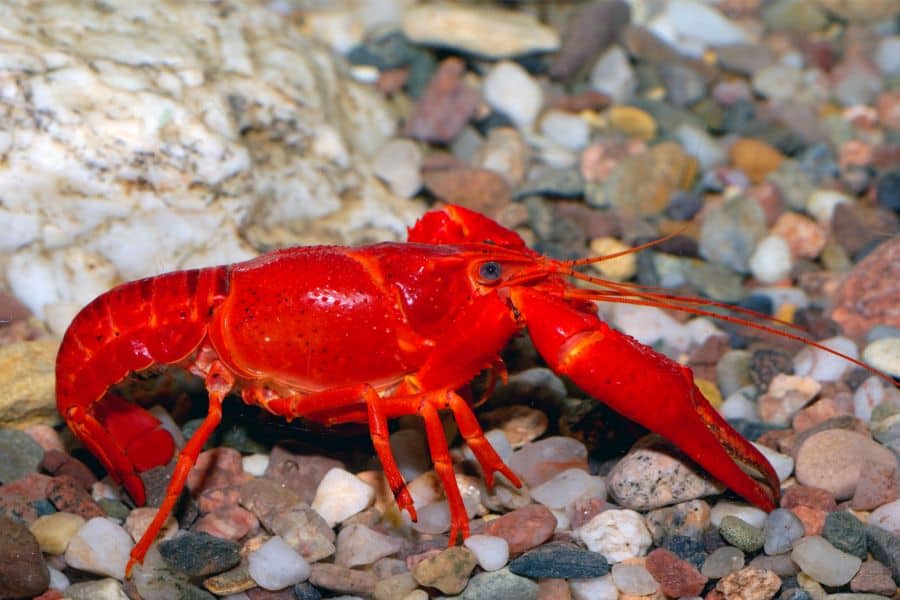Crayfish are wanderers. Aside from spending time in their territorial hiding places (like stones and holes), they usually roam around the substrate and on elevated objects (like aquatic plants and driftwood).
However, they are nocturnal and highly active when dark. Since we are asleep at night and our aquarium lights are off, we don’t see what Crayfish are doing, especially when feeding and with what they eat.
But no worries. I have spent countless sleepless nights with wild and tank-bred Crayfish, and in this article, you will learn their favorite food items and how they feed on them.
Multi-Feeding Omnivores and their Wild Food Items
Biologically classified as an omnivore, the diet of Crayfish includes plant and animal matter, with a long list of wild food items in their natural environment.
Although Crayfish are not picky eaters, what is crucial is how they access and grab their food since they are bottom-dwellers. In our list below, you will see that their food will either sink to the bottom or pass or float by as they wander out.
Wild Plant Food Items
Crayfish have a diversity of freshwater habitats (like streams, rivers, lakes, marshes, and ponds). Within these environments is an abundance of vegetation, both on the surface and underwater.
Although they do not have direct access, Crayfish can indirectly feed on surface plants through the parts that broke, fallen off, and sank to the bottom, like:
- barks
- twigs
- leaves
- and other fallen plant parts
However, this only forms a fraction of their diet, and the majority of their plant-based food sources are still coming from fresh and submerged aquatic plants.
The fact is, Crayfish are voracious aquatic plant eaters. There are cases that Crayfish can wipe out local vegetation, especially if they are introduced to a foreign body of freshwater.
While their voracious plant-eating habits have environmental effects, the good news is they have been scientifically used to control unwanted or invasive vegetation.
It is why Crayfish will feed on your aquarium plants, and do not be surprised if there are only a few surviving plants left.
Wild Animal Food Items
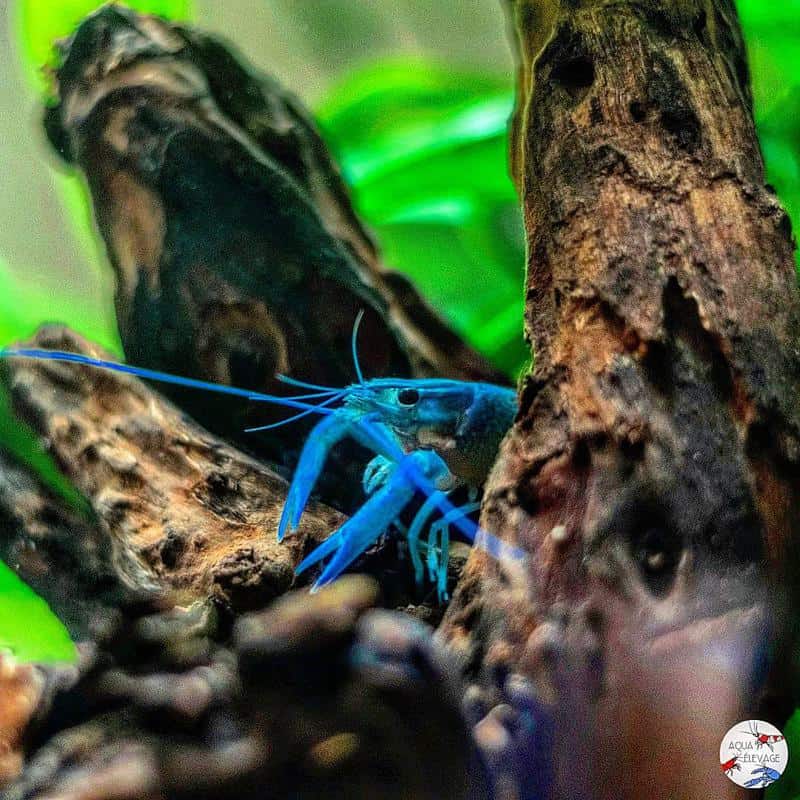
Animal food items are essential since all the life stages of a Crayfish will depend on it for nutrition and growth. Fortunately, the wild habitat of a Crayfish is not just teeming with vegetation but also abundant with a diversity of animal food items, like:
- insects
- snails
- worms
- leeches
- salamanders
- frogs and tadpoles
- small fish
- eggs of all sorts
- and other tiny aquatic animals
Unlike the immobility of plants, animals are mobile, and catching them can be challenging for Crayfish. Remember that they can only move forward by walking and swimming in a backward direction. But thanks to their chelipeds or front legs modified into a pair of large claws, grabbing a passing-by prey requires less movement for the Crayfish.
Detritus Food Items
Detritus is made of rotting plant parts, remains of dead animals (including their feces), and other organic debris that settles at the bottom of the substrate.
Since they are bottom dwellers, Crayfish also consume detritus, making them detritivores, or simply called scavengers. While it may sound gross, their scavenging trait is not bad for two reasons.
First, it controls the abundance of rotting organic matter in their wild habitat. If we apply this to a closed system like your aquarium, Crayfish prevents rotting matter from emitting toxic substances that can disrupt the balance of your water chemistry.
Second, detritus has nutrients, and Crayfish consuming detritus is guaranteed with good nutrition.
Filter-food Juveniles
The different modes of feeding and the food items we described above are mainly for adult Crayfish.
For juvenile Crayfish, it is a different scenario since their claws are not yet fully developed, and grabbing food may become difficult. It is why they employ the filter-feeding mechanism.
Using their oral appendages, juvenile Crayfish take in water and filter microscopic organisms composed mainly of plankton. Similarly, they can take in any food suspended in the water, as long as it is small enough to enter their mouth.
Commercially Available Foods
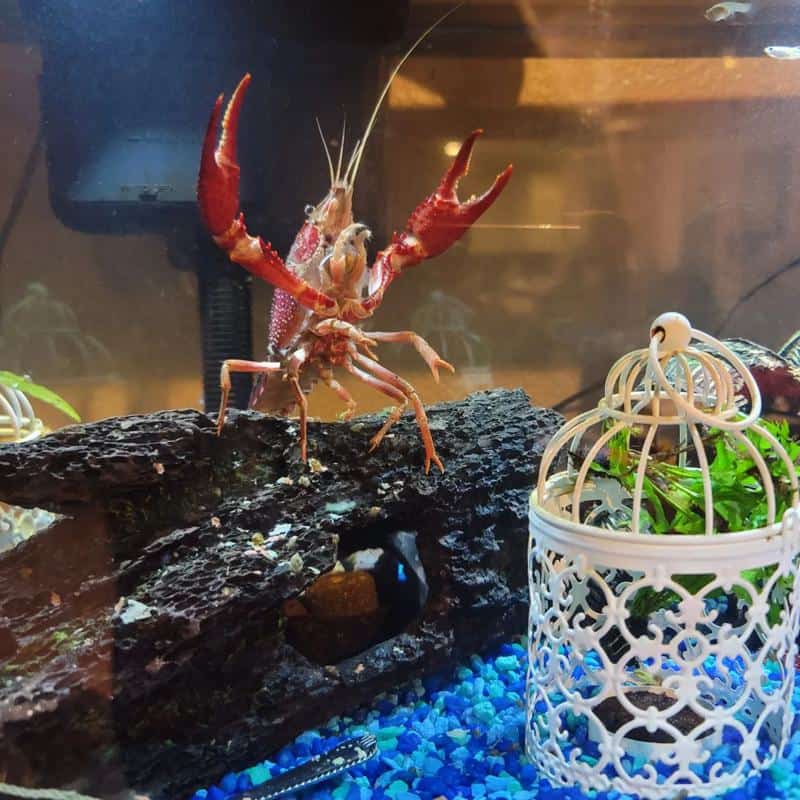
From wild food items, let us proceed to the commercially available foods a Crayfish can eat while being kept in the aquarium.
The good thing with commercial feeds is that, aside from the easy application, it is formulated specifically to meet the dietary needs of Crayfish. Most commercial feeds for Crayfish contain vitamins, nutrients, minerals, and essential amino acids. Similarly, some commercial feeds for Crayfish may have added fiber which helps in their digestion, or supplements like krill and spirulina which can improve health and intensify the body coloration of your Crayfish.
Do not just feed your Crayfish with any commercial feed. Ideally, sinking pellets will give the most results since they will go directly to the substrate and your Crayfish will have no time feasting on them.
Be aware that due to brand labeling, most commercial feeds for Crayfish are tagged as either fish food, shrimp food, or crab food.
Here are some of the commercial feeds I used in keeping my Crayfish:
Shrimp Disc Food
Instead of having a pellet form, this protein-rich food has a disc shape that slowly sinks to the bottom. Once consumed, it aids in the development of the Crayfish exoskeleton, making it perfect after molting.
Shrimp Granules
This protein-rich and nutrient-loaded food is made from processed insects that are grown sustainably. Each micro granule only measures from 0.25 to 1 mm, making them perfect for small-sized and juvenile Crayfish.
Seldom are leftovers from this commercial feed since it is highly palatable for Crayfish.
Fish Pellets
Although they are marketed as fish food, sinking fish pellets that are enriched in high-quality proteins, essential nutrients, and fiber can also become food for your Crayfish.
The trick here is to slightly feed more than usual. In this way, the excess feeds not consumed by fish will become the leftovers for your Crayfish to scavenge on them.
Sinking Wafer
Made primarily from grounded fish meal and supplemented with vitamin E, sinking wafers can be an alternative to pellets. They are cheap and other bottom-dwelling organisms will also feast on them.
Brine Shrimp
Also known as Artemia, Brine Shrimps are commonly sold in their egg form. You need to hatch them separately and the live fry will become food for your baby and juvenile Crayfish.
Household Food Items
In case you run out of commercial food, and your pet shop is far away, or it takes days for online ordering to deliver, do not worry since you can feed your Crayfish with household food items.
Fruits and vegetables are a healthy substitute for commercial feeds. The trick here is to slice it into thin pieces. For vegetables to become soft and easy to eat for Crayfish, we recommend you blanch them in warm water. Similarly, you need to remove the seeds in fruits since it can become a choking hazard.
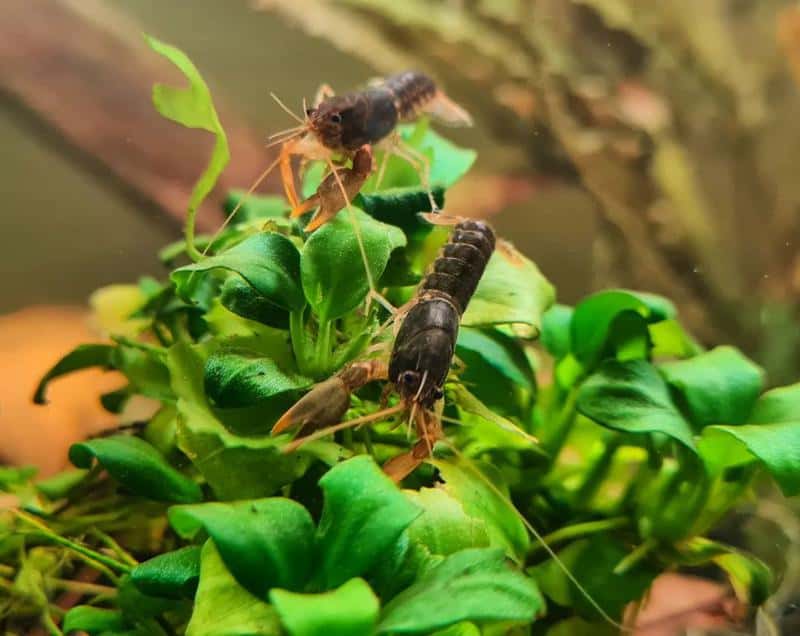
Top 10 Vegetables Crayfish Eat
- Spinach
- Kale
- Lettuce
- Carrots
- Zucchini
- Broccoli
- Cauliflower
- Cucumber
- Green Beans
- Sweet Potato
Top 10 Fruits for Crayfish
- Apples
- Bananas
- Strawberries
- Blueberries
- Raspberries
- Mangoes
- Papayas
- Kiwis
- Plum
- Watermelon
Amount and Frequency of Feeding
Despite not being a picky eater, you should control the amount of food your Crayfish are getting. Remember that overfeeding your Crayfish will result in various health conditions such as becoming weak, indigestion and softening of their exoskeleton.
The ideal amount of food you should give to your Crayfish is equivalent to 5% of their body weight. Depending on the species, the average weight of a tank-bred Crayfish is 2 ounces or 50 grams. If you have a similar weighing Crayfish, then you only need 2.5 grams of food.
Another thing that you need to consider is their passive feeding behavior. Crayfish will eat all the time, and giving their recommended amount of food in smaller portions will have better results.
When it comes to frequency, only feed your Crayfish daily when they are still juveniles. However, when they become adults or sexually mature, feeding is recommended a day apart or on alternate days.
Fun Fact: Feeding is a great tool to train your Crayfish. Try feeding them on the same time of the day. Over time, they will memorize this time-initiated pattern and will come out of their burrows during feeding time. They may even wait for you on the substrate whenever you’re late.
Foods that Are Bad for Crayfish
You might be tempted to give your Crayfish with just any type of food. Don’t be since there are specific foods proven to be bad for your Crayfish, like:
Biscuits and Chips
Along with other processed foods, they are high in salt, sugar and the synthetic chemicals that can harm your Crayfish. So, tell your kids not to do this since they are often the culprit in doing this bad practice.
Cheese and Other Dairy Products
Surprisingly, Crayfish are lactose intolerant and giving them dairy foods will lead to indigestion.
Citrus Fruits
Fruits are a part of a Crayfish diet, but not citrus like oranges and lemons. The acid content in citrus fruits is too much to take for your Crayfish.
Avocado
This is one of the few non-citrus fruits that are bad for Crayfish since it contains a fungicidal toxin called persin.
Feeding and Molting
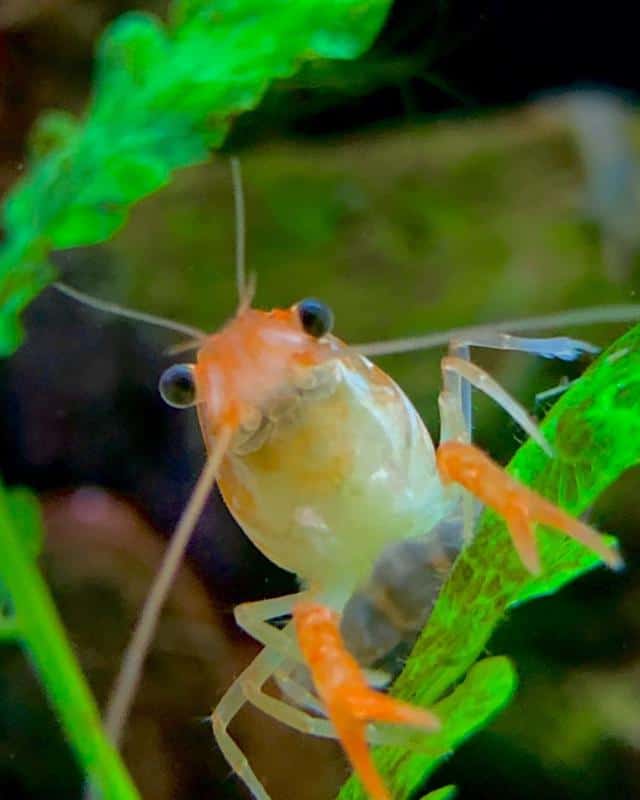
Molting is part of a Crayfish life cycle. This growth process involves shedding their exoskeleton to produce a new and larger shell. During their first year, a Crayfish can molt up to 10 times and decrease as they grow old.
We decided to put emphasis on molting for you to understand when to feed them and when not to feed your Crayfish during the molting process.
Increase Food Ration Before Molting
Days before a Crayfish starts molting, its appetite for food increases and you will notice this by how fast they consume their food. Crayfish need to eat before molting since they need to store energy to be used when they are most vulnerable and during the production of a new shell.
Seeing the indication, you need to increase their amount of food from 5% to 10%. And not just any food. Try feeding them with calcium-rich foods like shrimps, snails, and algae. You can also use commercial feeds enriched in calcium. Remember that calcium is the main mineral used in producing a new shell.
As the days pass, decrease the food ration until you see their exoskeleton starts shedding off.
No Feeding During Ecdysis
Ecdysis is the stage of molting where the shell is completely shed off. This leaves their soft body exposed and unprotected. At this stage, Crayfish usually hide in their burrows for days while their new shell is still developing.
In most cases, Crayfish will not eat during ecdysis. However, some Crayfish will still eat, but on a significantly decreased appetite.
During ecdysis, we discouraged feeding your Crayfish. It prevents them from going out their burrows and exposing their unprotected bodies. You only resume back to regular feeding when their exoskeleton is fully hardened and once you Crayfish starts to go out of their burrows.
Read More:
FAQs
Do Crayfish Eat Algae?
Yes. Being an omnivore, algae is a part of the Crayfish diet. They will eat algae that grows on the substrate, driftwood and decorations. They may even eat algae growing on the tank glass, but only those that are near the substrate.
Are Crayfish Cannibals?
Yes. Crayfish may eat their own species, especially during molting when their soft bodies are exposed and unprotected. However, cannibalism in Crayfish only happens when they are overcrowded and when food is scarce.
Do Crayfish Eat Bread?
Yes. However, it is not recommended you feed your Crayfish with bread. Aside from the low nutrition they are getting, some of the ingredients in making bread are bad for them.
Final Words
Crayfish has a long list of food items. While it is overwhelming, use their food checklist to your advantage by giving them a variety of food. Do not feed your Crayfish entirely with commercial feeds as they may get used to it.
Try some variation, like giving them fruits and vegetables once a week. Just like us humans, we need variety to enjoy our food. Eating will become boring if we always eat noodles every day. And oh, by the way, Crayfish do eat noodles (but not recommended).
